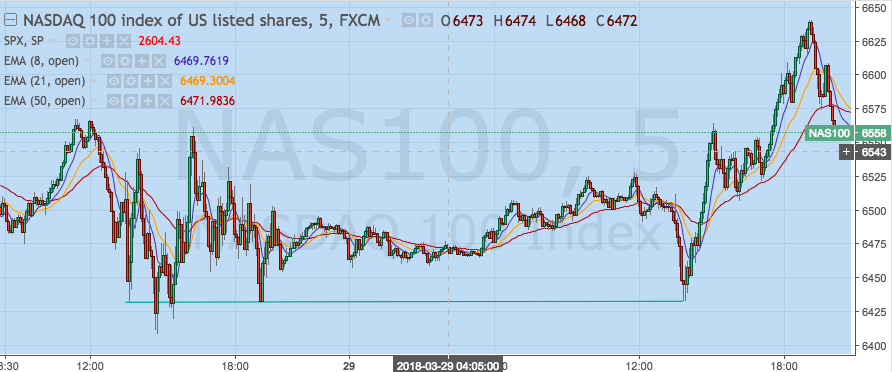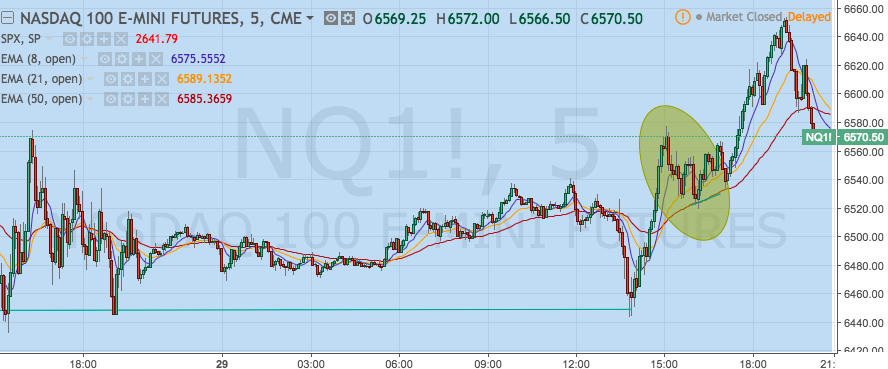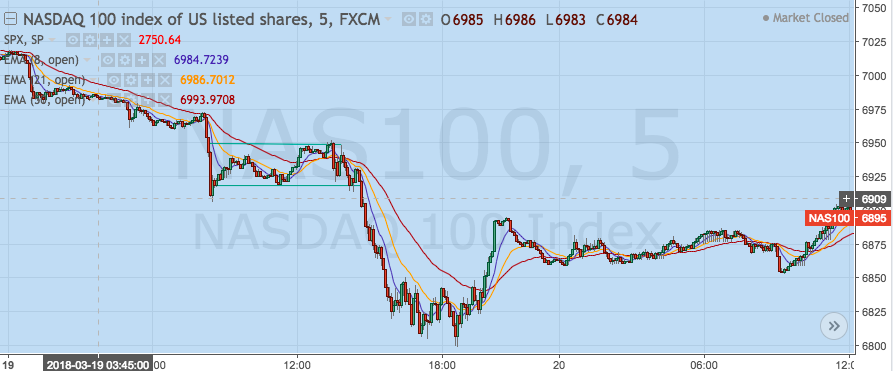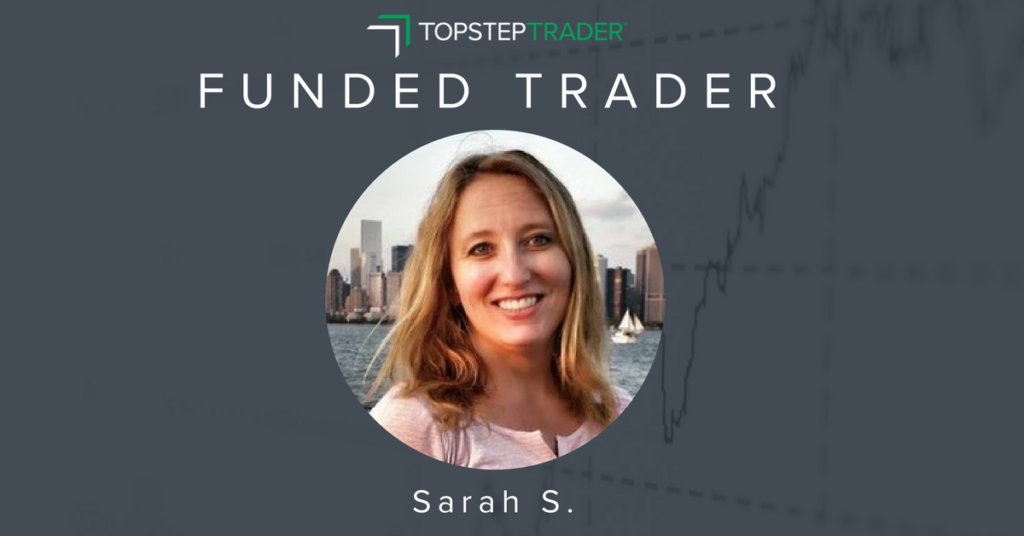Home › Market News › Consistent Profitability is a Journey: Interview with a Funded Trader
Think you have to trade a lot of contracts to put up four-figure days? Wrong. Sarah S. in Jersey City, NJ made $3,200 her first day trading in a Funded Account®, $1,000 her second, and $3,500 two days later. All trading a max of one contract at a time.
Sarah is the first to admit that these were “unusually” profitable days where she was able to capture the right side of a trend. But still, there’s a lot that traders can learn from this performance.
In this interview, Sarah provided robust examples of the three trade setups that she looks for in trading Nasdaq futures.
Topstep: Hi, Sarah. Earning $3,200 in a day is pretty remarkable, but doing it with just a single contract is outstanding. How did you do it?
Sarah: An unusually profitable day usually means I was on the right side of the trend from an overnight or early morning trade that lasted all day.
Topstep: But that is some ability to ride a trend — equating to more than 150 cumulative points on the Nasdaq. How have you learned to be that patient with positions?
Sarah: I have been a proprietary trader for the past four years, focusing on equities as well as exchange-traded funds (ETFs) and exchange-traded notes (ETNs).
In futures, I trade the Nasdaq because I’ve found that it trends in one direction for a longer duration and spends less time in consolidation than the other indices. To help me get a sense of the market, I don’t just watch the futures, but also the stocks that drive it. That means that I keep an eye on the FAANG stocks (Facebook, Apple, Amazon, Netflix and Google parent Alphabet), as well as Nvidia and Tesla. This keeps me in tune with the tech sector.
Topstep: How does that work? Can you give us insight into your strategy?
Sarah: My strategy is to trade against significant pivot points looking at charts on different time frames (5-minutes, daily, and weekly charts). I also monitor order flow and volume to help in my analysis.
Scenario 1:
Here is an example from one of my perfect setups on March 29:

During intraday trading, I look at exponential moving averages (EMAs), usually the 21/50/200 day, and volume weighted average price (VWAP) as levels that Nasdaq futures may bounce off of and establish a trend.
An ideal trade setup is when the Nasdaq makes a quick move towards one of these lines of support or resistance — the faster and more furious the move, the more likely I have found it is to reverse trend for a nice trade.
Note the sharp move into a previous resistance level at 6432 (horizontal turquoise line) that turned into a powerful reversal. When the price broke out above the 50-period EMA (red line), that’s a clear signal for me to go long. In this scenario, it stayed above the 50-period EMA for most of the day, so this means to stay long until it breaks below and stays below it.
Scenario 2:
Staying with that chart, we see a second scenario.

Even if you missed that first breakout, you had two more opportunities to buy a re-test of the 50-period EMA. You can see that pattern earlier in the chart as well, where the 50-period EMA kept providing support before finally breaking down.
Keeping a stop below the 50-period EMA ensures that you may take a small loss on trades where the red line would not provide support.
Scenario 3:
I also look for moves above or below consolidation ranges. Below is an example of a break down from a range on March 19.

In the chart above, the price was consolidating between the two turquoise lines. Then, it broke down, indicating a short opportunity.
Going long or short a break up or break down from a range is often a profitable play, particularly if it is trading below the EMA and breaks lower — as happened in this scenario.
Topstep: Those are very practical tips. Is there anything else you can tell us about your approach?
Sarah: Overall, my approach to trading is to specialize in one product and a few setups that I trade well more often than not. The key is then to make losing trades significantly smaller than winning trades. After learning the hard way with repeated risk management mistakes, I have been able to develop and maintain a growth mindset. Eventually, I changed my behavior to find a way to have more, larger winners than losers.
Topstep: What is your approach to knowing when to get out of a trade? Do you set hard stops?
Sarah: I sometimes hold trades overnight — with a stop, of course! — and trade intra-day. I don’t use hard stops for intra-day trading, but I do know when I will exit a trade if it doesn’t work. It has taken me years of painful lessons to improve this skill. This is something I will continually have to work at.
Topstep: Speaking of continually working, do you have any plans for improvement?
Sarah: I’m always working on having an edge; keeping losing trades small yet giving it enough room to work will always be a work in progress.
I’ve also made changes over the years. For instance, I do intra-day trading less often and only during the highest conviction opportunities.
Topstep: Any additional tips for traders in our program?
Sarah: There are three pieces of advice that have helped me greatly.
Find one thing you can trade well and only trade with one contract until you get consistent.
Experiment with various strategies and find patterns or situations that make the most sense to you.
The road to consistent profitability is a journey and takes time to learn. The key is to be patient with yourself, find a way to have more winners than losers, and find your niche.
Topstep: Thanks so much Sarah! This is really great stuff.
If you would like to join Sarah in a Funded Account, get started trading today!
